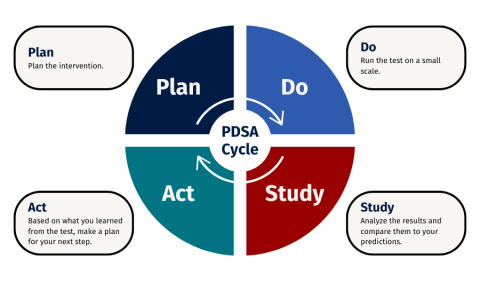Vascular Surgery MIPS Value Pathway (MVP) Feedback and SVS Response
The Vascular Surgery MVP Feedback from the CMS public comment period has been posted to the CMS website. The SVS is very grateful for all the feedback that was given. After reviewing the MVP candidates, the feedback for the Vascular Surgery MVP was consistent with other MVP candidates and issues previously identified by CMS. Read our response to specific items brought to our attention.
Vascular Surgery MVP Feedback
Your resources for MACRA, MIPS, QPP and more
How Medicare Quality Requirements Will Impact Reimbursement & Practical Tips To Successfully Meet Them
On Feb. 29, the SVS hosted the webinar, How Medicare Quality Requirements Will Impact Reimbursement & Practice Tips to Successfully Meet Them.
Vascular surgeons have repeatedly acknowledged financial threats to the specialty secondary to changes in reimbursement and government policies, specifically those involving the Centers for Medicare and Medicaid Services (CMS). Vascular surgeons must be empowered to navigate current and future requirements and regulations to both ensure continued high-quality care for their patients and also to preserve their financial viability. All providers who submit claims to CMS, regardless of practice setting, are required to submit quality measures as part of the Merit-based Incentive Payment System (MIPS) Quality Payment Program (QPP) or through an Alternative Payment Model (APM). While many SVS members may not be directly involved with QPP reporting currently, there are new requirements anticipated in the near term that have direct implications for all.
Vascular surgeons are encouraged to watch the webinar recording to fully understand these policies, and how to comply with them, to prevent reimbursement penalties with the rollout of the future CMS rules.
Supporting documents:
Do you know what your payment adjustment was based on your quality reporting?
Based on your performance on the Quality Payment Program, you could receive a negative payment on top of any scheduled CMS payment cuts. It is pivotal for physicians to know what measures are being reported on their behalf. CMS publicly makes available your performance data available annually. This information will help guide you in leveraging reporting that is reflective of the care you provide. We have created a file where you can look up your information and coordinating data definitions and instructions. If you have any questions, please contact the SVS via SVSquality@vascularsociety.org.
Access the File
Please note: when opening the file, it will be too large to open in your browser. Some browsers (Chrome, for example) will automatically download the file for you. If you are opening in another browser (Edge), please click the prompt at the top of the screen to initiate the download.
Additional Resources
The Medicare Access and Children’s Health Insurance Plan Reauthorization Act (MACRA) was signed into law on April 16, 2015. MACRA is bipartisan legislation which repealed the Sustainable Growth Rate and established the Quality Payment Program (QPP). The QPP requires that most physicians who submit claims to the Centers for Medicare and Medicaid Services (CMS) participate in one of two programs: Merit-based Incentive Payment System (MIPS) or Advanced Alternative Payment Model (APM).
Based on feedback from physicians and stakeholders led the QPP to create the following objectives:
- To improve beneficiary population health
- To improve the care received by Medicare beneficiaries
- To lower costs to the Medicare program through improvement of care and health
- To advance the use of healthcare information between allied providers and patients
- To educate, engage and empower patients as members of their care team
- To maximize QPP participation with a flexible and transparent design, and easy to use program tools
- To maximize QPP participation through education, outreach and support tailored to the needs of practices, especially those that are small, rural and in underserved areas
- To expand Alternative Payment Model participation
- To provide accurate, timely, and actionable performance data to clinicians, patients and other stakeholders
- To continuously improve QPP, based on participant feedback and collaboration
For more information, you can access the QPP here: The Quality Payment Program (cms.gov)
Announcements
SVS Response to the MPFS CY 024 Proposed Rule
Information
CMS Resource Library A trove of background information, documents and downloads
Featured Articles
Monthly topics published in the Journal of Vascular Surgery and JVS-Venous and Lymphatic Disorders




